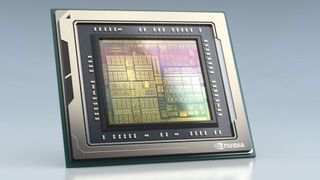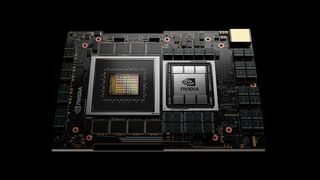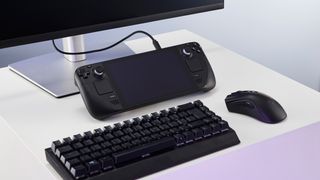AMD and Nvidia to join Qualcomm in the Windows Arm(s) race
Leaving Intel sulking in the corner, playing with its own toys.

The x86 CPU architecture has dominated the PC market since dinosaurs roamed the land but there's been a flurry of rumours concerning efforts by AMD and Nvidia to battle Qualcomm head-on, preparing Arm-powered CPUs for Windows computers in 2025.
As things currently stand, Qualcomm has an exclusive deal with Microsoft, ensuring that any computer using Windows on Arm has a Snapdragon CPU inside it. This deal is set to end in a few year's time and given how the Arm architecture has dominated the phone industry and is making headway in the server and AI industries, it looks like AMD and Nvidia want to get the jump on Qualcomm.
That's according to a report by Reuters, which starts by saying that people with inside knowledge are claiming that Nvidia is planning to release an Arm CPU for Windows in 2025. This isn't new territory for the GPU giant, as it has been making such processors for years. The Nintendo Switch is powered by a version of Nvidia's Tegra X1 system-on-chip (SoC) that houses four Cortex-A57 CPU cores.
Nvidia and Microsoft have teamed up in the past, with the first two Surface tablets using Windows RT and Tegra SoCs in 2012 and 2013. Eventually, Microsoft went with Intel and its Atom CPU, and Nvidia then focused its processor designs for other markets.
More recently, Nvidia developed the Grace CPU, a design that's the polar opposite of the old Tegra. With 144 cores, based on Arm's Neoverse V2 architecture, it's targeted at the HPC (high performance computing) industry for use in data analytics and AI applications.
So definitely not suitable for a desktop PC, but Nvidia clearly has the financial backing to do something about that.

The report also says that AMD is developing an Arm CPU for Windows, too, and this is something that it's done in the past. Back in 2012, AMD announced the Opteron A1100 CPU with eight Cortex-A57 cores but it took four years to come to market and by that time, nobody was interested.
The biggest gaming news, reviews and hardware deals
Keep up to date with the most important stories and the best deals, as picked by the PC Gamer team.
Around the same time that AMD started developing its x86 Zen architecture, a parallel Arm-based project called K12, also kicked off. However, that was all put on ice as money woes meant the company had to pool resources into something that was the most likely to succeed and bring in the most cash (which Zen clearly did).
Are we going to see a K12 revival? Perhaps but given the pace of processor development, especially that done by Arm, it's more likely that it's going to be a completely fresh take. I think it's safe to say that AMD will leverage all of its segments into creating a new Arm processor, so expect to see an RDNA GPU and maybe some nifty FPGA parts as well.

Steam Deck review: Our verdict on Valve's handheld.
Best Steam Deck accessories: Get decked out.
Steam Deck battery life: What's the real battery life?
The exclusive deal between Qualcomm and Microsoft might be ending in 2025, but the former is clearly trying to fortify its position by developing SoCs more suitable for Windows PCs. As spotted by Windows Report, Qualcomm is prepping a seriously beefed up chip for next year, in the form of the Elite X. With a new 12-core CPU and an updated Adreno GPU, the chip definitely has an Apple M1 vibe to it.
I don't expect any of the forthcoming Arm processors to be battling at the top of the PC gaming charts, as all of this points to grabbing a share of the lucrative notebook sector. But what about Intel? It's been grabbing deals to manufacture Arm-based chips in its foundries but that doesn't mean it's not considering making its own chips on that architecture.
It would be a funny turn of events, though, if AMD, Nvidia, and Qualcomm all turn to Intel to make these forthcoming Arm CPUs.

Nick, gaming, and computers all first met in 1981, with the love affair starting on a Sinclair ZX81 in kit form and a book on ZX Basic. He ended up becoming a physics and IT teacher, but by the late 1990s decided it was time to cut his teeth writing for a long defunct UK tech site. He went on to do the same at Madonion, helping to write the help files for 3DMark and PCMark. After a short stint working at Beyond3D.com, Nick joined Futuremark (MadOnion rebranded) full-time, as editor-in-chief for its gaming and hardware section, YouGamers. After the site shutdown, he became an engineering and computing lecturer for many years, but missed the writing bug. Cue four years at TechSpot.com and over 100 long articles on anything and everything. He freely admits to being far too obsessed with GPUs and open world grindy RPGs, but who isn't these days?
Most Popular






